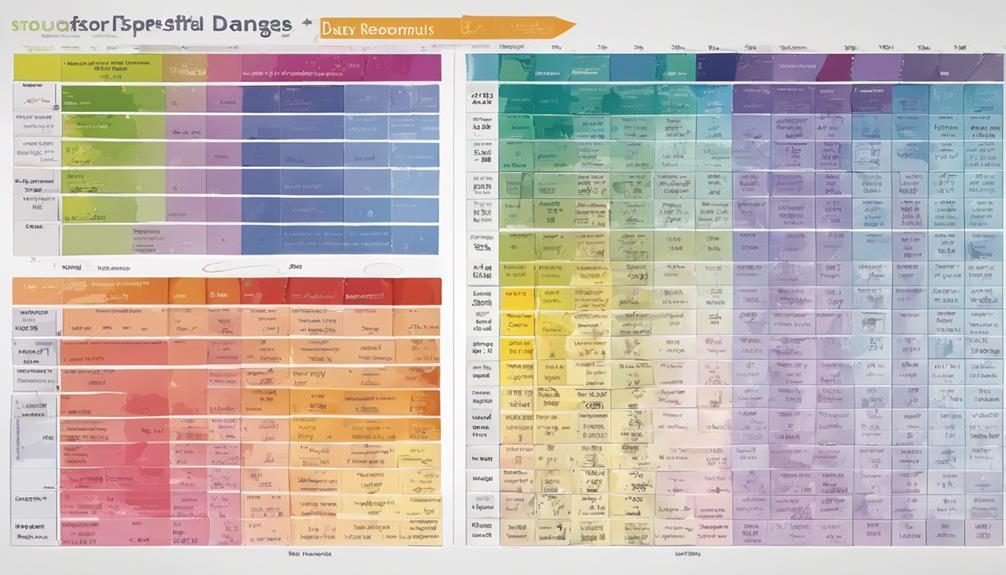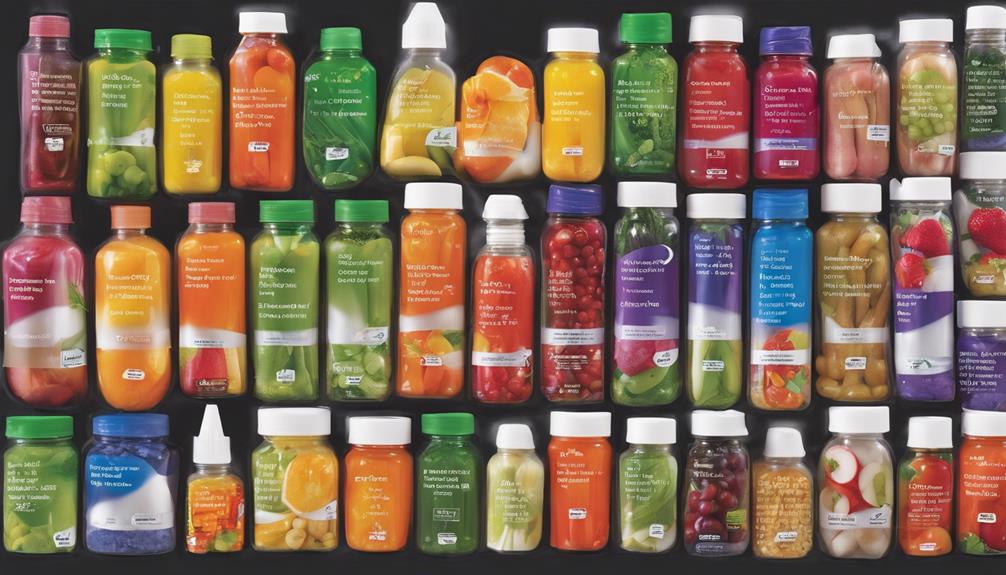Have you ever wondered if the amount of formula you are feeding your baby is appropriate for their age and weight? It is important to understand the proper guidelines for formula feeding based on your baby’s developmental stage to support their overall well-being.
As we explore the age-appropriate chart for formula feeding, we'll uncover key insights that can help optimize your baby's nutrition and growth. Stay tuned to discover how these guidelines can support your baby's journey to a healthy start in life.
Key Takeaways
- Start with 1-2 ounces per feeding, adjusting as baby grows
- Monitor hunger cues for timely feedings
- Offer 2-2½ ounces per pound of baby's weight daily
- Seek healthcare provider advice for personalized feeding guidance
Newborn Feeding Guidelines
As newborns begin their feeding journey, it's important to understand the recommended guidelines for formula intake and feeding frequency to support their growth and development effectively. For newborns, starting with 1 to 2 ounces of formula per feeding every 2 to 3 hours is a common practice. Typically, newborns require around 8 to 12 feedings in a 24-hour period to meet their nutritional needs adequately. Paying attention to signs of hunger that your newborn may exhibit is vital, as this can indicate when they need to be fed.
Newborns have specific nutritional requirements important for their growth and health. The amount of formula per feeding can be gradually increased as they grow and show signs of increased appetite. Seeking guidance from a healthcare provider can provide you with personalized advice on formula intake and feeding schedules tailored to your newborn's needs. Remember, every baby is unique, and what works for one may not necessarily work for another. By monitoring your newborn's cues and seeking professional advice, you can make sure they receive the best care possible.
Infant Formula Recommendations

When considering infant formula recommendations, it's essential to understand the evolving nutritional needs of growing babies. Newborns typically start with 1-2 ounces of formula per feeding, gradually increasing to 3-4 ounces by the end of the first month.
To guarantee adequate nutrition, formula-fed infants should aim for 2 to 2½ ounces of formula per pound of body weight daily. This shift in feeding amounts aligns with the baby's increasing appetite and growth requirements.
Caregivers play a critical role in monitoring the baby's cues to determine the appropriate amount of formula needed for each feeding. By following these guidelines and staying attuned to the baby's signals, caregivers can support healthy development and growth.
It's important to remember that each baby is unique, so adjusting the feeding amounts based on the individual baby's needs is key to promoting the best health and well-being.
Feeding Schedule by Age
In understanding the feeding schedule by age, caregivers should be mindful of the gradual change in feeding frequency and amounts as infants grow and develop. Here are some age-appropriate guidelines to take into account:
- Newborns: They typically eat every 2-3 hours, starting with 1-2 ounces per feeding for breastfed newborns and 1-2 ounces for formula-fed infants. It's important to wake newborns for feeding if they sleep for more than 4-5 hours during the initial weeks to make sure proper nutrition and growth.
- 2 Months Old: By this age, infants may start spacing feedings to every 3-4 hours. Breastfed babies may increase their intake to 2-3 ounces per feeding, while formula-fed infants progress to 3-4 ounces.
- 6 Months Old: Infants may further space feedings to every 4-5 hours. At this stage, breast milk or formula should continue to be the sole source of nutrition for infants in the early stages of development.
Formula Amounts for Babies

For prime nutrition and growth, caregivers should be attentive to the recommended amount of formula to feed babies based on age and weight guidelines. Newborns typically start with 1 to 2 ounces of formula per feeding, which can increase to 3 to 4 ounces by the end of the first month. Guidelines suggest offering 2 to 2½ ounces of formula per pound of body weight daily. It's essential to consult a feeding chart and adjust formula amounts as babies grow throughout their first year.
Understanding how much to feed your infant is essential. The formula does your baby need depends on factors like age, weight, and growth rate. It's advisable to wake newborns for feeding if they sleep for more than 4-5 hours initially. Following feeding FAQs: How much should my baby eat? can help ensure your little one is receiving adequate nutrition for healthy development. Remember, each baby is unique, so it's important to monitor their cues and adjust feeding amounts accordingly.
Toddler Formula Feeding Chart
To guarantee top nutrition for toddlers, we should aim to provide them with a daily intake of 16-24 ounces of whole milk or toddler formula. Alongside toddler formula feeding, it's crucial to offer a variety of healthy foods to meet their nutritional needs and support growth and development.
Here are some key points to ponder:
- Balanced Diet: Make sure that toddler formula feeding aligns with a balanced diet rich in fruits, vegetables, whole grains, lean proteins, and dairy to promote overall health and well-being.
- Consult Healthcare Provider: Seek guidance from a healthcare provider when switching from formula to whole milk for toddlers. They can offer personalized advice based on the child's specific needs and development stage.
- Limit Juice Intake: Keep juice intake to a maximum of 4 ounces per day for toddlers to prevent excessive sugar consumption and promote healthy hydration habits.
Frequently Asked Questions
How Much Formula Should Babies Drink by Age?
We typically start with 1 to 2 ounces per feeding for newborns, increasing to 3 to 4 ounces by the end of the first month. Babies may need around 2.5 ounces of formula per pound daily. It's also essential to wake newborns for feeding if they sleep too long.
WHO Guidelines on Formula Feeding?
We follow WHO guidelines on formula feeding when breastfeeding isn't feasible. Safe preparation, handling, and storage are vital. Healthcare providers guide us on these practices. We aim for the best nutrition for our little ones.
Why Is Formula Not Recommended After 12 Months?
We don't give formula after 12 months because whole cow's milk provides essential nutrients for toddlers. They can explore more foods for a balanced diet. Pediatricians recommend this change for healthy eating habits and overall nutrition.
Do You Go by Weight or Age for Formula?
We consider both weight and age when determining formula intake. It's essential to strike a balance between the two to provide the best nutrition for babies. Consulting a healthcare provider can offer personalized guidance for your little one's needs.
Conclusion
To sum up, following the age-appropriate formula feeding guidelines is like providing a nourishing symphony for your baby's growth and development.
By tuning into their cues and feeding them the right amount at the right time, you're creating a harmonious melody of health and happiness.
So keep following these recommendations to guarantee your little one thrives like a well-tuned instrument, growing strong and content.
Happy feeding!









